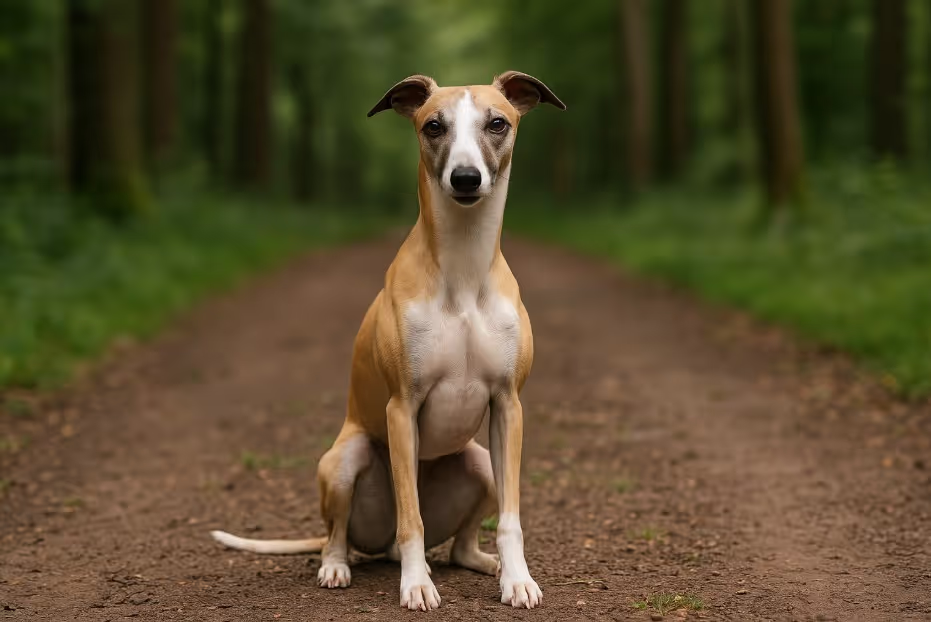The Whippet is a sleek, gentle, and affectionate sighthound celebrated for its graceful appearance and lightning-fast speed. Originally bred for racing and hunting small game, the Whippet has evolved into a loving companion that thrives equally in active households and relaxed home environments. Known as the “poor man’s racehorse” in its early history, this quiet and sensitive breed is devoted to its family, making it a wonderful choice for those seeking a calm yet athletic companion.

The Whippet originated in England during the late 18th and early 19th centuries. Developed by crossing Greyhounds with smaller terriers, Whippets were used by working-class families for hunting rabbits and other small game, as well as for competitive racing. Their name likely derives from the phrase “to whip it,” meaning to move quickly. Recognized by the American Kennel Club in 1888, the Whippet has since become a favorite for both sport and companionship, known for its versatility and gentle nature.
A slender, athletic sighthound with a streamlined body built for speed.
The Whippet’s short coat is very low-maintenance.
An athletic breed that enjoys bursts of high-speed play but also loves to relax.
Intelligent and eager to please, but sensitive in nature.
Balanced nutrition supports their lean, muscular build.
Generally healthy but prone to certain sighthound-specific concerns.
Whippets are available through reputable breeders and rescue organizations.
Are Whippets good apartment dogs?
Yes, they adapt well to small spaces with daily exercise.
Do Whippets bark a lot?
No, they are generally quiet dogs.
Are Whippets good with children?
Yes, they are gentle and affectionate with kids.
Do they shed much?
No, they shed lightly year-round.
Are Whippets hypoallergenic?
No, but their low-shedding coat may cause fewer allergies than some breeds.
How much exercise do they need?
About an hour a day, including opportunities for sprinting.
Do Whippets get along with other pets?
Yes, with socialization—though they may chase small animals due to prey drive.